U.S. Marshals: In the Beginning
U.S. Marshals: In the Beginning
.
“The United States Marshals Service (USMS) is the oldest American federal law enforcement agency.”
~ Untied States Marshals Service, Wikipedia
.

.
The U.S. Marshals are Born
.
The Judiciary Act was approved by Congress in 1789. President George Washington signed the act into law, then appointed thirteen U.S. Marshals to act as census takers. The Federal Census was conducted in 1790, and every decade thereafter, by the U.S. Marshals. This role continued until 1870 when the U.S. Marshal’s no longer held that responsibility. [source]
.
U.S. Marshals continued with law-enforcement roles throughout the 19th century. They labored to enforce the Fugitive Slave Act. They guarded President Lincoln. During the Civil War, they sought out Confederate spies and confiscated property used to support the Confederacy.
The Marshals pursued counterfeiters as the primary lawmen the Treasury Department relied upon until the Secret Service was created for that role in 1865. In 1871, the Department of Justice was created, encompassing the U.S. Marshals. Then came the Moonshine War and the Marshals’ efforts to enforce the whiskey tax laws.
.
The Marshals were given extensive authority to support the federal courts within their judicial districts and to carry out all lawful orders issued by judges, Congress, or the president. As a balance to this broad grant of authority, Congress imposed a time limit on the tenure of Marshals, the only office created by the Judiciary Act with an automatic expiration. Marshals were limited to four-year, renewable terms, serving at the pleasure of the president.
.
Until the mid-20th century, the Marshals hired their own Deputies, often firing the Deputies who had worked for the previous Marshal. thus, the limitation on the Marshal’s term of office frequently extended to the Deputies as well.
.
[Source]
.

.
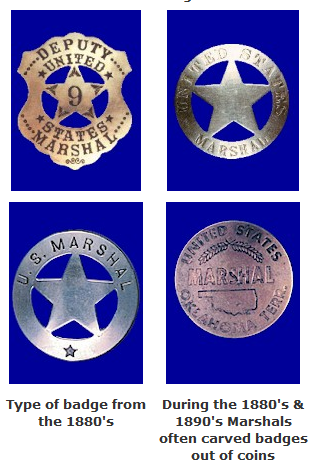
19th Century U.S. Marshal Service Badges. [Source]
.
1875: Black Deputy U.S. Marshal Bass Reeves
.
Bass Reeves is among the first known African American Deputy U.S. Marshals west of the Mississippi. He serves for 32 years, until 1907, in the Western District of Arkansas and Indian Territory. He arrests more than 3,000 felons during his career. [Source]
.
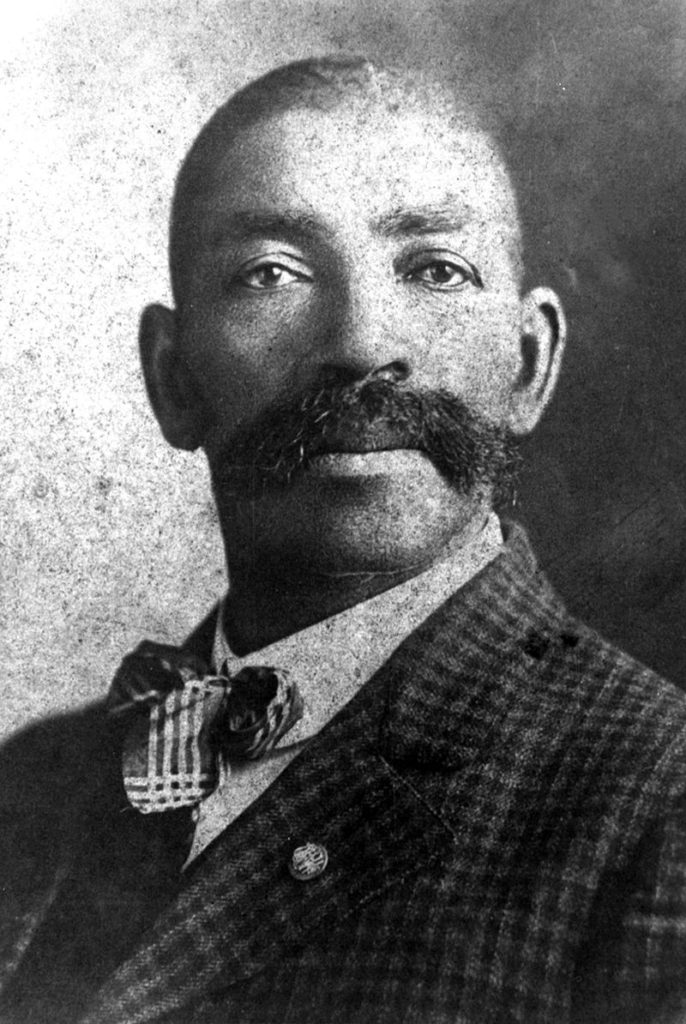
U.S. Marshal Bass Reeves. Image: Public Domain courtesy of Wikipedia
.
I enjoyed this book about Deputy U.S. Marshal Bass Reeves, “the most feared U.S. marshal in the Indian country.” This amazing lawman began life enslaved.
.
1877: First Black U.S. Marshal Frederick Douglass
.
Frederick Douglass becomes the first African American U.S. Marshal upon his appointment by President Hayes on March 17. Douglass is the U.S. Marshal for the District of Columbia and serves until 1881. [Source]
.
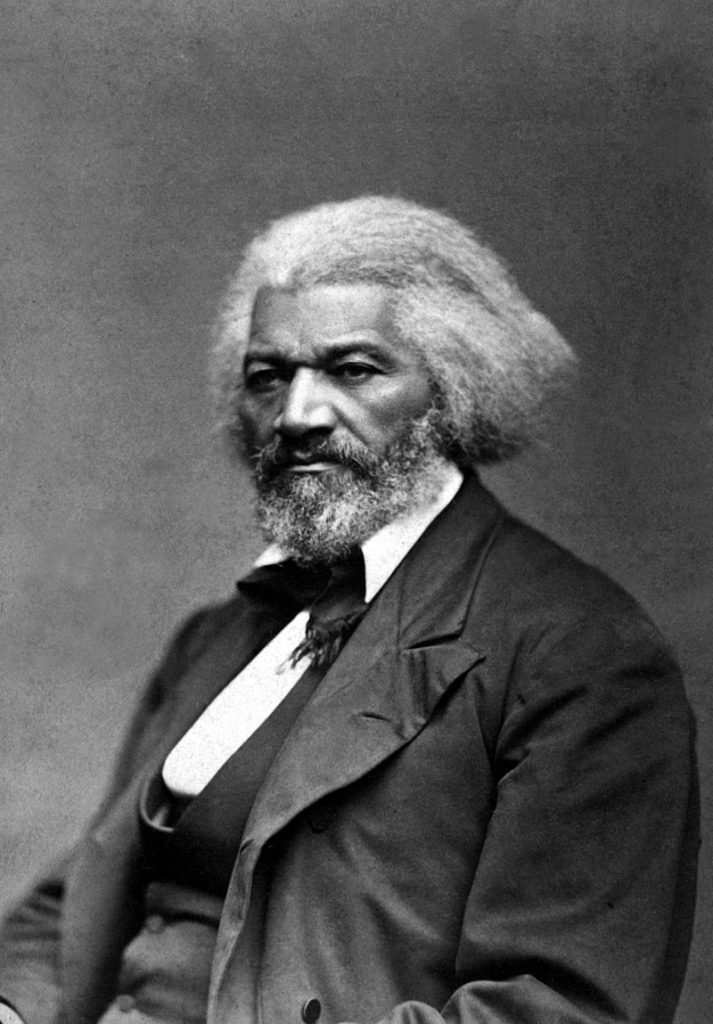
Frederick Douglass. Image: Public Domain, courtesy of Wikipedia
.
1878: U.S. Marshals on Both Sides of Lincoln County War
.
Lincoln County War was an Old West conflict between rival factions which began in 1878 in New Mexico Territory… and continued until 1881…
U.S. Marshals fought on both sides of the conflict. Billy the Kid serves as a Special Deputy U.S. Marshal. [Source]
.
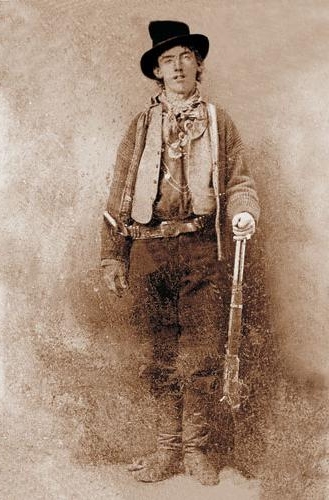
Portrait of American gunman Billy the Kid (1859-1881). Image mirrored on vertical axis to correct widely-seen flopped tintype. Cartridge loading gate on Winchester Model 1873 lever action rifle is on the right side of the receiver. Image: Public Domain, courtesy of Wikipedia
.
1881: U.S. Marshals’ Gunfight at the O.K. Corral
.
October in Tombstone, Arizona Territory, deputy U.S. Marshal Virgil Earp and Special Deputy U.S. Marshals, brothers Wyatt and Morgan Earp, along with Doctor John “Doc” Holliday, gun down Frank and Tom McLaury as well as Billy Clanton a short distance from the O.K. Corral. [Source]
.
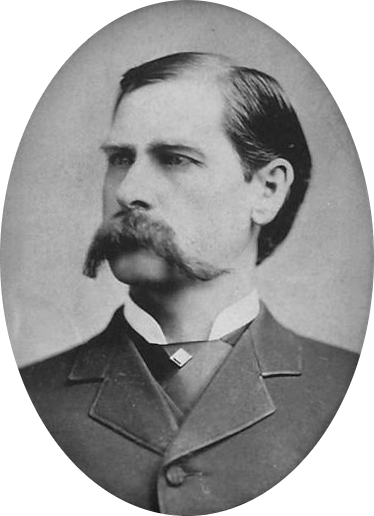
Wyatt Earp. Image: Public Domain, courtesy of Wikipedia
.
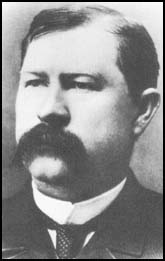
Virgil Earp. Image: Public Domain, courtesy of Wikipedia
.
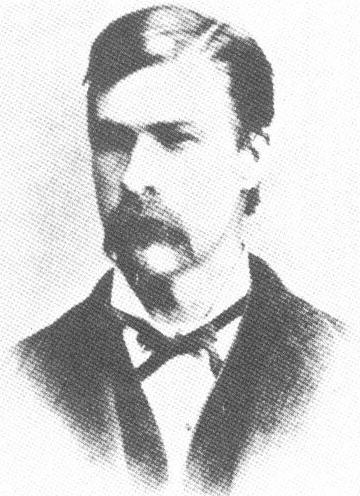
Deputy U.S. Marshal Morgan Earp, 1881. Image: Public Domain, courtesy of Wikipedia.
.
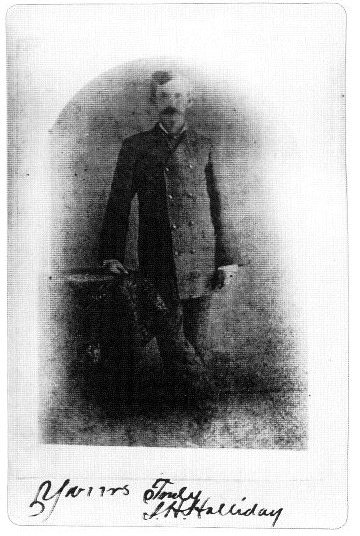
Autographed photo of John “Doc” Holliday taken in 1879 in Prescott, Arizona. Image: Public Domain, courtesy of Wikipedia
.
1890: U.S. Marshals Protect Federal Judges
.
In the April Supreme Court decision, In Re Neagle, the Court holds that the President can, through the Attorney General, direct a U.S. Marshal to accompany and protect federal judges from assault, thus establishing one of the primary missions of the Marshals Service to protect the federal judiciary. [Source]
.
1894: U.S. Marshals intervene in Pullman Strike
.
The Pullman Strike begins May 11. The federal courts and President Cleveland’s Administration over U.S. Marshals to keep trains running to ensure the U.S. mail is safe from theft and damage. [Source] (emphasis added) “In 1894, U.S. Marshals helped suppress the Pullman Strike.” [Source]
.
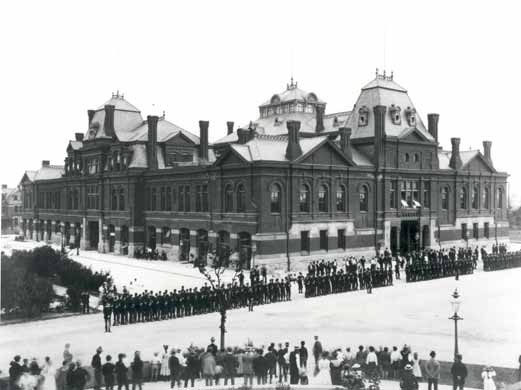
Pullman strikers outside Arcade Building in Pullman, Chicago. The Illinois National Guard can be seen guarding the building during the Pullman Railroad Strike in 1894. Image: Public Domain, courtesy of Wikipedia
.

.
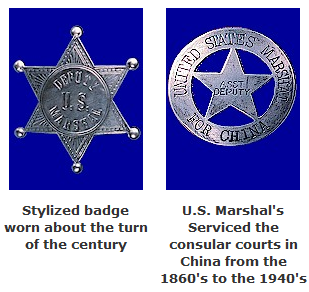
Historic U.S. Marshal Service Badges. [Source]
.
19th Century Enforcement Roles, U.S. Territories
.
.
During the settlement of the American Frontier, marshals served as the main source of day-to-day law enforcement in areas that had no local government of their own [Larry D. Ball, The United States Marshals of New Mexico and Arizona Territories, 1846-1912 (1978).]. U.S. Marshals were instrumental in keeping law and order in the “Old West” era. They were involved in apprehending desperadoes such as Bill Doolin, Ned Christie, and in 1893, the infamous Dalton Gang after a shoot-out that left Deputy marshals Ham Hueston, Lafe Shadley, and posse member Dick Speed, dead. Individual deputy marshals have been seen as legendary heroes in the face of rampant lawlessness with Wyatt Earp, Bat Masterson, Dallas Stoudenmire, and Bass Reeves as examples of well-known marshals. Bill Tilghman, Heck Thomas, and Chris Madsen formed a legendary law enforcement trio known as “The Three Guardsmen” when they worked together policing the vast, lawless Oklahoma and Indian Territories. [Source]
.
A U.S. Marshal in Sweet Romance
.
.
The U.S. Marshals’ history continues, but I’m most interested in the facts leading up to the turn of the century (1900) when August “Gus” Rose (my fictional character is Maybe This Christmas, the hero in The Marshal’s Surrender, and mentioned in The Drifter’s Proposal) worked as a Deputy U.S. Marshal in the East. He showed up in my town of Mountain Home, Colorado in December of 1899 and panicked Effie–she was sure he’d come after her, to bring her back in irons to answer for her crimes.
.

.
The Marshal’s Surrender is book #3 in a (currently) 10-book long series: Holidays in Mountain Home.
.
.
.

.
Related Articles
.
.
Updated April 2022
Copyright © 2016 Kristin Holt LC
U.S. Marshals: In the Beginning U.S. Marshals: In the Beginning










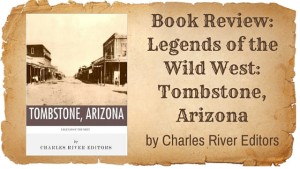








very interesting information!
Thank you, Charlene. I’m glad you stopped by!
~ Kristin